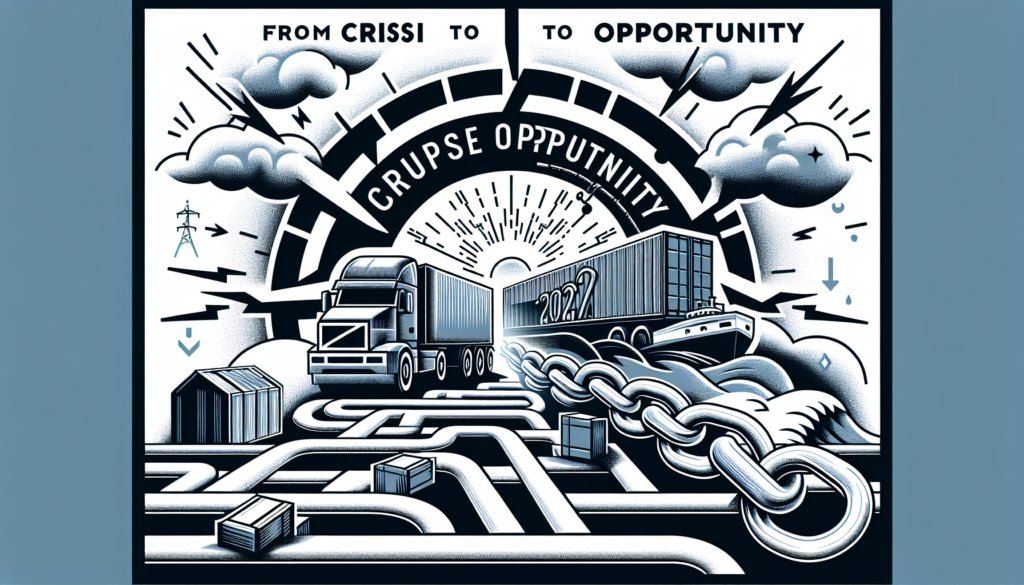Breaking Through the Supply Chain Bottlenecks: Success Stories from 2023
[ad_1] Breaking Through the Supply Chain Bottlenecks: Success Stories from 2023 In the fast-paced world of supply chain management, businesses are constantly facing challenges when it comes to ensuring smooth and efficient operations. From delays in production to transportation bottlenecks, there are a myriad of obstacles that can hinder the flow of goods from manufacturers to consumers. However, in 2023, we have seen some remarkable success stories of companies breaking through these supply chain bottlenecks and achieving unprecedented levels of efficiency and customer satisfaction. One such success story comes from a leading e-commerce company that was struggling to meet the growing demands of its customers. With orders pouring in from all corners of the globe, the company found itself facing significant delays in processing and shipping products to its customers. Frustrated with the situation, the company decided to revamp its supply chain strategy and implement a more streamlined approach to order fulfillment. By partnering with a third-party logistics provider that specialized in e-commerce fulfillment, the company was able to significantly reduce its order processing times and improve its overall efficiency. The provider offered a state-of-the-art warehouse facility equipped with the latest technology and automation systems, allowing for faster and more accurate order processing. With the help of the logistics provider, the company was able to break through the supply chain bottlenecks that were holding it back and deliver a seamless customer experience. Another success story comes from a food and beverage company that was struggling to keep up with the high demand for its products. With a limited warehouse space and outdated inventory management system, the company was facing constant stockouts and delays in fulfilling orders. Determined to turn things around, the company decided to invest in a new warehouse management system and expand its storage capacity. By partnering with a warehousing and distribution provider that offered customized solutions for food and beverage companies, the company was able to optimize its inventory management processes and streamline its order fulfillment operations. The provider offered temperature-controlled storage facilities and advanced inventory tracking systems, allowing the company to keep track of its stock levels in real-time and prevent stockouts. With the help of the warehousing provider, the company was able to overcome the supply chain bottlenecks that were hindering its growth and achieve a higher level of operational efficiency. These success stories highlight the importance of adopting a strategic and proactive approach to supply chain management. By partnering with the right logistics and warehousing providers, companies can overcome the challenges posed by supply chain bottlenecks and achieve their business goals. Whether it’s investing in advanced technology, expanding storage capacity, or optimizing inventory management processes, there are a variety of solutions available to help businesses break through the barriers that stand in their way. In conclusion, the key to breaking through supply chain bottlenecks lies in innovation, collaboration, and a willingness to adapt to changing market conditions. By staying ahead of the curve and embracing new technologies and strategies, companies can position themselves for success in an increasingly competitive marketplace. As we look towards the future of supply chain management, it’s clear that those who are able to navigate the challenges of today will be the ones who thrive tomorrow. FAQs Q: How can I improve my supply chain efficiency? A: To improve supply chain efficiency, consider partnering with a third-party logistics provider, investing in advanced technology, and optimizing inventory management processes. Q: What are some common supply chain bottlenecks? A: Common supply chain bottlenecks include delays in production, transportation bottlenecks, stockouts, and inefficient order fulfillment processes. Q: How can I overcome supply chain bottlenecks? A: To overcome supply chain bottlenecks, consider investing in automation systems, expanding storage capacity, and implementing a more streamlined approach to order fulfillment. For more information on how Fulfillment Hub USA can help you overcome supply chain bottlenecks and achieve greater efficiency, visit https://fulfillmenthubusa.com. [ad_2]
Breaking Through the Supply Chain Bottlenecks: Success Stories from 2023 Read More »



